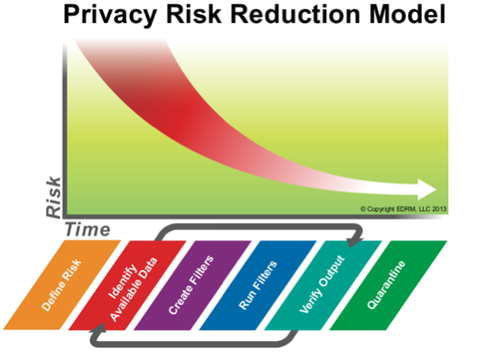Leaving Your Hard Drives in a Rental House is Negligent, Court Rules – eDiscovery Best Practices

In Net-Com Services, Inc. v. Eupen Cable USA, Inc., No. CV 11-2553 JGB (SSx) (C.D. Cal. Aug. 5, 2013), the plaintiff’s destruction of evidence was negligent where its principal failed to take steps to preserve evidence he had stored in a home he rented to nonaffiliated lessees.
A principal of the plaintiff, Steve Moffatt, had custody and control over the company’s documents, which included its financial information. The company was using one accounting system but switched to another when it moved into a new location. When the employee looked for this data and could not find it, he assumed it had been “lost or stolen.” However, he did not report the loss to the company’s insurer or to the police.
Over the previous three years that the company was in operation, it was based in Moffatt’s home office. The company went out of business in October 2011, and as the company wound down, Moffatt stored all of the company’s computer hardware and software in his garage. Around that same time, in September or October 2011, Moffatt rented his home. The only precaution he took was to instruct his lessees not to throw any equipment or software away. Despite this instruction, he drove by the home either in September or October and noticed that the renters “had put a ‘big pile of office equipment and everything else in the front yard’” and were throwing them in dumpsters. As associate retrieved the computers’ hard drives from the renters’ trash in September 2011. The hard drives stored the company’s most recent accounting system; another back-up drive stored the same information, but it was most likely thrown out as well.
In 2012, during discovery, the court granted Eupen’s motion to compel “production of ‘missing accounting information,’ including financial data believed to be stored on purportedly ‘dead’ hard drives. Net-Com responded that the data “may no longer exist” and that its principals had had “no luck” accessing the information on the drives. The court ordered Net-Com to produce the missing information, aside from the company’s federal and state tax returns. It also required Net-Com “to produce ‘the computer hard drives containing potentially relevant ESI that Net-Com has been unable to restore’ to allow Eupen USA ‘to test Net-Com’s assertion that the information is inaccessible.’”
In July 2013, Eupen filed a motion for sanctions based on the loss of data and suggested that Net-Com “be precluded from offering evidence of its damages because its production of financial data was incomplete and insufficient due to the loss of information ‘allegedly contained on a computer hard drive that was apparently no longer functional.’” In response, Net-Com argued that no evidence existed that he hard drives had been “‘irreparably damaged’ such that their contents [were] irretrievable.’” The court declined to preclude the evidence but ordered Net-Com to send the hard drives to a vendor for forensic analysis.
Net-Com complied and submitted the drives to a vendor, Ai Networks. The vendor found “‘recoverable data on at least one of the hard drives,’” said it could retrieve it within three weeks, and estimated the cost to recover it would be between $2,000 and $3,000.
The court found that Net-Com’s duty to preserve arose at least by February 8, 2011, when it filed the lawsuit. The complaint alleged that Net-Com’s damages amounted to “millions of dollars”; therefore, the complaint placed the company’s financial and accounting data at issue. But “seven months after filing suit, Moffatt effectively abandoned the hardware and software containing Net-Com’s financial records by leaving the equipment and data in a garage in a house he rented out to third parties. Even if the eventual loss and destruction of evidence was not intentional, it was definitely negligent.”
The court found sanctions appropriate, noting that an adverse inference instruction is “‘adverse to the destroyer not because of any finding of moral culpability, but because the risk that the evidence would have been detrimental rather than favorable should fall on the party responsible for its loss.’” Although the court could not yet determine whether Eupen had been prejudiced, it ruled that Net-Com had to “bear the full cost of restoring and producing data on the hard drives” and ordered the company “to restore and produce any relevant data from the subject hard drives within fourteen days of the date of this Order.”
So, what do you think? Were the sanctions severe enough? Please share any comments you might have or if you’d like to know more about a particular topic.
Case Summary Source: Applied Discovery (free subscription required). For eDiscovery news and best practices, check out the Applied Discovery Blog here.
Disclaimer: The views represented herein are exclusively the views of the author, and do not necessarily represent the views held by CloudNine Discovery. eDiscoveryDaily is made available by CloudNine Discovery solely for educational purposes to provide general information about general eDiscovery principles and not to provide specific legal advice applicable to any particular circumstance. eDiscoveryDaily should not be used as a substitute for competent legal advice from a lawyer you have retained and who has agreed to represent you.




